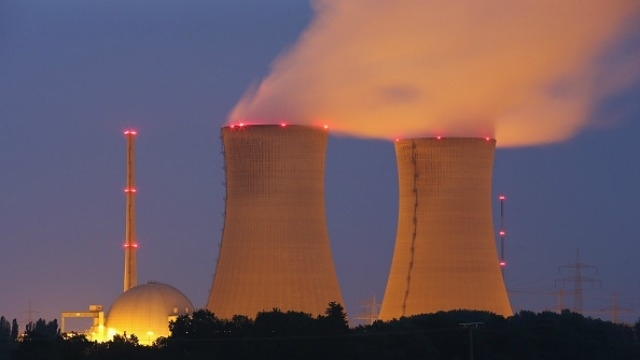

Small modular nuclear reactors (SMR) could play a crucial role in meeting Paris Agreement targets, says Wood Mackenzie.
Nuclear power is at the crossroads. While some countries are pushing ahead with phase-out plans, others – particularly China – are rapidly expanding reactor fleets. Wood Mackenzie, a Verisk business (Nasdaq:VRSK), estimates the world needs US$2 trillion in capex to build new power capacity to decarbonise power generation and keep average temperatures well below 2 degree Celsius. Nuclear power could be key in the global decarbonisation movement.
Wood Mackenzie Asia Pacific Head of Markets and Transitions, Prakash Sharma said: “Today, over 125 gigawatts (GW) of new large-scale nuclear capacity has been proposed, with China being the largest contributor, accounting for a third of the pipeline.
“By 2050, the country will account for nearly half of global operational nuclear capacity which is expected to rise 88% from 2020 to hit 685 GW under a 2-degree Celsius scenario.”
Electrification is increasing across all sectors of the economy and is the mainstay of the energy transition. That means decarbonisation of power generation needs to be faster than the underlying demand growth.
In a scenario with rapid power demand and renewables growth, flexible and dispatchable sources will be essential. SMRs are an option, alongside carbon capture, utilisation and storage (CCUS) and hydrogen. Typically within the range of 150 – 450 megawatts electricity (MWe) in size, SMRs offer a potential solution as they become lower cost, quicker and easier to construct, able to be sited in many more locations, and have enhanced safety features.
“As more fossil fuel-fired power plants are retired around the world, brownfield sites and transmission connections could be repurposed to be used by SMRs. But capex costs must fall 50% to compete with other flexible technologies,” Sharma said.
The levelised cost of electricity (LCOE) for a new SMR is currently upwards of US$120 per megawatt-hour (MWh) for a typical market in Europe, the US or Japan. It compares well with other flexible supply options for renewable energy such as fossil fuel plants with CCS, bioenergy with CCS or hydrogen combustion. SMR costs can fall under US$80/MWh in the 2030s with government support, technology innovation and investments. China has achieved faster cost declines in other technologies and could potentially repeat the success in SMR nuclear.
Sharma said: “While the concept of SMRs has been around for some time, there are only a handful of them in operation or under construction. Around 70 different SMR concepts in different phases of development are happening around the world currently.
“The challenge is to scale down the number of concepts to realise cost reductions in a highly regulated industry.”
Many of the SMR concepts are being pursued by multiple developers, each of which will have different designs. SMRs can realise cost reductions by producing modular reactors in factories. The number of deployment-ready concepts will need to be reduced so that vendors can secure orders, scale-up production and bring down costs. Other energy technologies that have been on a similar journey have managed to reduce cost significantly when the industry has coalesced around a small number of technology concepts.
Government support for first-of-a-kind design concepts and guaranteed offtake arrangements for early-stage projects will be critical for nuclear to support the full decarbonisation of power generation.
Sharma said: “SMRs may still be at its infancy, but its potential is endless. They can play a role in producing low-carbon hydrogen, which is a cornerstone of almost all deep decarbonisation scenarios.
“Using our proprietary levelised cost of hydrogen model, we estimate that if power from an SMR could be delivered at US$65/MWh, and paired electrolysers can be run at very high load factors, nuclear-produced hydrogen could compete with green hydrogen.”
In a significant move toward advancing green energy and industrial growth in the state, Himachal…
Golabl chemical conglomerate BASF has announced that its now offering the world’s first biomass-balanced polyethersulfone…
In a crucial stint to bolster the biogas sector and sustainable dairying in the country,…
TotalEnergies SE has received approval to proceed with its Middlebrook solar and battery project in…
Andhra Pradesh Chief Minister Chandrababu Naidu has inaugurated the Rs 1,000-crore green hydrogen plant of…
The BITS Pilani has developed an innovative solution for managing landfill leachate, domestic septage, and…